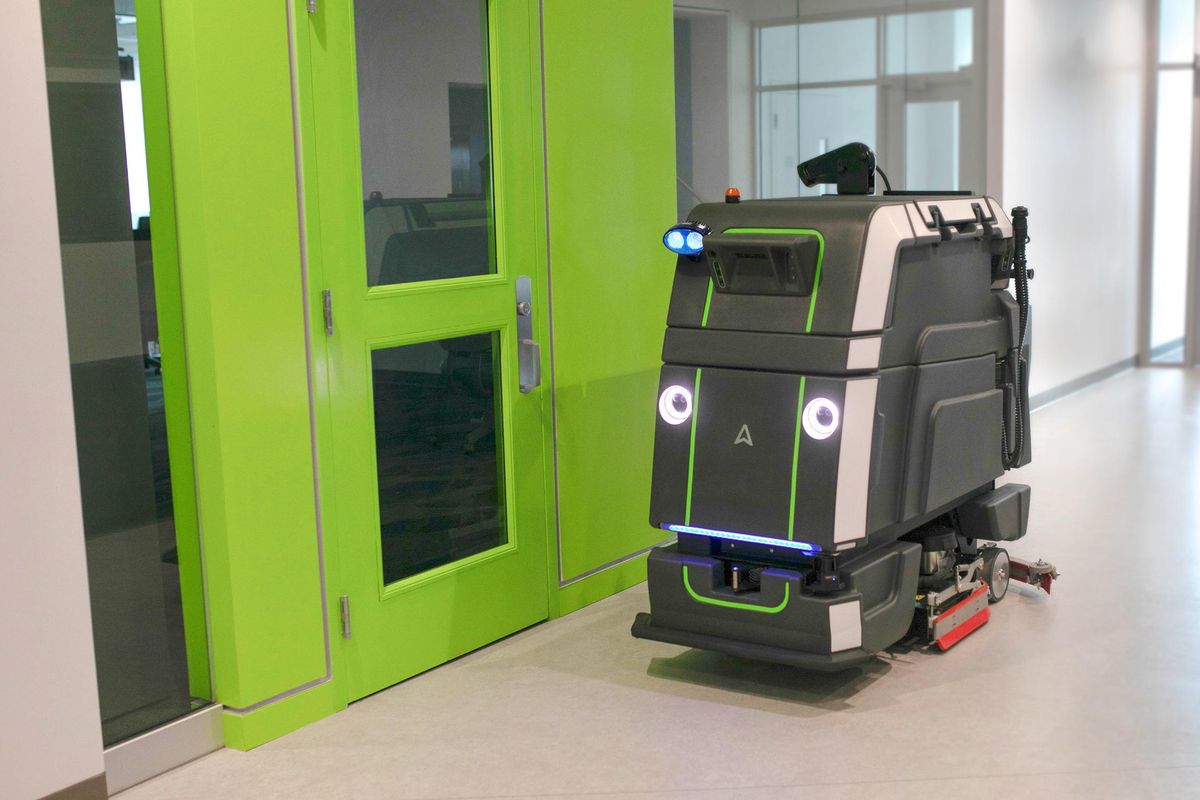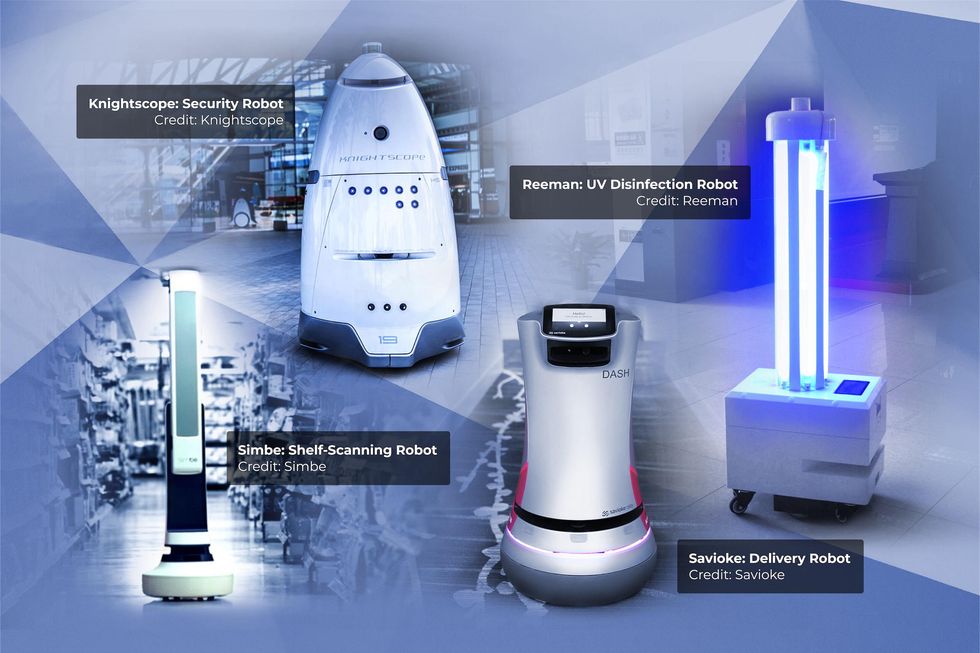Why Multi-Functional Robots Will Take Over Commercial Robotics

This is a sponsored article brought to you by Avidbots.
The days of having single-purpose robots for specific tasks are behind us. A robot must be multi-functional to solve today's challenges, be cost-effective, and increase the productivity of an organization.
Yet, most indoor autonomous mobile robots (AMRs) today are specialized, often addressing a single application, service, or market. These robots are highly effective at completing the task at hand, however, they are limited to addressing a single use case. While this approach manages development costs and complexity for the developer, it may not be in the best interest of the customer.
To set the stage for increased growth, the commercial AMR market must evolve and challenge the status quo. A focus on integrating multiple applications and processes will increase overall productivity and efficiency of AMRs.
The market for autonomous mobile robots is expected to grow massively, and at Avidbots we see a unique opportunity to offer multi-application, highly effective robotic solutions.
Today, there are many application-specific AMRs solving problems for businesses. Common applications include indoor parcel delivery, security, inventory management, cleaning, and disinfection, to name a few.
The market for these types of AMRs is expected to grow into the tens of billions by 2025 as projected by Verified Market Research. This is a massive opportunity for growth for the AMR industry. It is also interesting to note that the sensor set and autonomous navigation capabilities of the various single application indoor AMRs today are similar.
Hence, there is an opportunity to combine useful functionalities into a single multi-application robot, and yet the industry as a whole has been slow to make such advancement.
Today's Robots Focus on Single Tasks
There's never been a better time for the AMR industry to take strategic steps given the changes we've had to embrace as a result of the COVID-19 pandemic. In fact, there have been many robots brought to market recently that look to address disinfection, the majority of which have been single-purpose, including UVC robots.
With heightened standards of cleanliness in mind, let's consider the potential of extending a cleaning robot from its single-use to performing both floor cleaning and high-touch surface disinfection.
In September 2021, Avidbots launched the Disinfection Add-On, expanding the functionality of the company's fully autonomous floor-scrubbing robot, Neo. By simply adding a piece of hardware and pushing a software update, Avidbots' Neo, the floor-scrubbing robot, now serves multi-purposes.
 The Future: Multi-Purpose Robots
The Future: Multi-Purpose RobotsNot only will multi-application robots like this example provide more value through additional convenience to end-customers; when compared to single application robots, the value derived also comes from the economic impact.
The economics of multi-application robots are simple. Combining two applications on one robot can deliver significant cost savings versus running two full single-use robots. For example, the price to rent a disinfection-only robot or a cleaning-only robot is in the neighborhood of US $2,000-3,000 per month per robot.
But Neo with its Disinfection Add-On extends beyond its primary function of floor cleaning to disinfect for a few hundred dollars per month. Disinfection is available at a cost that is around one-tenth of the price of a single-purpose disinfection robot or manual disinfection.
These savings can only be realized since the main cleaning function already pays for the AMR itself and the disinfection is merely a hardware and software extension.
There are other OEMs following this trend; Brain Corp. combines cleaning with shelf-scanning, leveraging existing autonomous floor-scrubbing robots as the platform. Similarly, Badger combines hazard analysis (spill detection, etc.) with a shelf-scanning robot as the platform.
Meet Neo 2, a Fully Autonomous Robotic Floor CleanerThis video presents an overview of Neo 2, Avidbots' advanced robotic platform optimized for autonomous cleaning and sanitization. Neo is equipped with the Avidbots AI Platform featuring 10 sensors, resulting in 360 visibility and intelligent obstacle avoidance. Combined with integrated diagnostics and Avidbots Remote Assistance, Neo offers advanced autonomy, navigation, and safety capabilities.
Video: Avidbots
There are a few parallels between the current state of robotics today and the early computer industry of the 1970s. In the early '70s, when mainframes still dominated computer system sales, several manufacturers released low-cost desktop computers that were designed to support multiple applications, peripherals, and programming languages.
The low cost of desktop computers, the key killer-apps," and the large number of potential applications resulted in large growth and the proliferation of desktop computers worldwide, which eventually overtook mainframe sales in 1984.
As sales of AMRs increase and the cost of processing systems continue to drop, mass-produced AMR OEMs will likely be capable of delivering AMRs at a significantly lower price in the coming years. Computer systems like the NVIDIA Xavier NX, which are designed specifically for leading-edge robotic perception applications, paint a promising picture of the evolution of computer systems for indoor AMRs.
We look forward to a day in the near future when indoor AMRs will be sold at much less than US $10,000. Lowering the cost of AMRs is certainly a key to enabling larger and faster growth in the industry.
About AvidbotsAvidbots is a robotics company with a vision to bring robotic solutions into everyday life to increase organizational productivity and to do that better than any other company in the world.
Our groundbreaking product, the Neo autonomous floor scrubbing robot, is deployed around the world and trusted by leading facilities and building service companies. Headquartered in Kitchener, ON, Canada, Avidbots is offering comprehensive service and support to customers on five continents.
There is the open question of the killer-app" in AMRs for commercial spaces. What application can best serve as a platform for multi-application robots?
Cleaning is certainly a candidate given that it's a service needed in most indoor spaces and saves two to four hours per night of manual labor. However, there are other industries such as the hospitality and food-service industry where parcel delivery has seen large growth and success since it saves many hours daily. In the examples above, customers will still likely benefit from having multiple potential applications in their AMRs.
While only time will tell how the industry will evolve, it's clear that delivering several applications with a single robot and at a much lower cost than multiple robots (or manual counterparts) has the potential to make AMRs more attractive. We can take the industry to new heights by continuing to push the boundaries, including developing multi-application robots that can be used across industries and allow organizations to focus on revenue-generating activities.
Our industry-leading multi-application solution is growing and so is our team of Avidbotters, including robotics engineers. If you're interested in learning more about Avidbots or exploring career opportunities visit Avidbots.